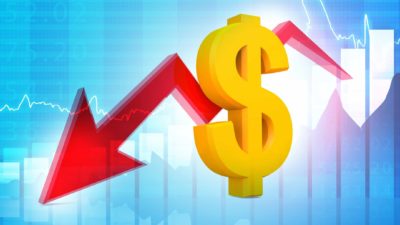Yesterday, Westpac Banking Corp (ASX: WBC) unveiled Australia's consumer confidence measurement for June.
A combination of persistent inflation and more expected interest rate increases significantly dampened the average consumer's sentiment in the latest quarter. The unsettling data was accompanied by further weakness in the S&P/ASX 200 Index (ASX: XJO), as the benchmark sunk another 1.27% on Wednesday.
At face value, the consumer sentiment index hitting recessionary lows is worrisome. Though, there might be a silver lining to be found.
Let's dive deeper into the data.
How bad is it?
The consumer sentiment index, often referred to as consumer confidence, is an economic indicator that aims to convey how consumers are feeling about their financial situation. In short, it's an approximate reflection of how likely people are to spend their money.
Consumers are more likely to spend their money on goods and services when they are optimistic about their financial future. In contrast, consumers are more likely to tighten their belts during economic uncertainty.
According to the June report, consumer confidence in Australia fell 4.5% from the prior quarter to 86.4. A reading below 100 is considered a pessimistic outlook held by the consumer.
The deterioration in sentiment follows the Reserve Bank of Australia (RBA) lifting the cash rate by 50 basis points on 7 June, making debts more expensive in the process.
Westpac chief economist Bill Evans highlighted that this figure is in close proximity to some of the worst financial periods for the country. In the June report, Evans stated:
Over the 46-year history of the survey, we have only seen Index reads at or below this level during major economic dislocations. The record lows have been during COVID-19 (75.6); the Global Financial Crisis (79.0); early 1990s recession (64.6); the mid-1980s slowdown (78.7) and the early 1980s recession (75.5). Those last three episodes were associated with high inflation; rising interest rates; and a contracting economy – a mix that may be threatening to repeat.
Additionally, consumers are likely putting off household purchases, based on the report's findings. The 'time to buy a major household item' sub-index slipped 3.3% to 89.5. Such a number has only been recorded prior to a severe economic contraction.
Potential positive in Australia's falling consumer confidence
The consumer confidence data might sound like a lot of doom and gloom, but perhaps there's a bright side.
Ultimately, the RBA is jacking up interest rates in a bid to tame the raging beast that is inflation. In a sentence, inflation is the evaporation of our dollar's purchasing power due to increasing prices.
This can either be attributable to increased demand (more dollars competing for the same number of goods/services), or reduced supply (the same amount of dollars competing for a smaller number of goods/services).
While both supply and demand are creating issues, interest rate increases 'force' consumers to spend less on inflationary items, and more on debts.
Essentially, the fall in consumer confidence might be an early sign that the RBA's rate hike is starting to work on lowering inflation. If so, it might mean Australia won't require the feared interest rates of 3% to 4% to bring inflation back in line.
AMP chief economist Shane Oliver noted this in a tweet yesterday, as shown below.
As Oliver states, the notable collapse in consumer confidence in Australia hints at an upper bound for interest rates.
Much of the share market is pricing in peak interest rates of ~4%. If Oliver is right, a lower peak in rates could result in a more positive outlook for equities.









